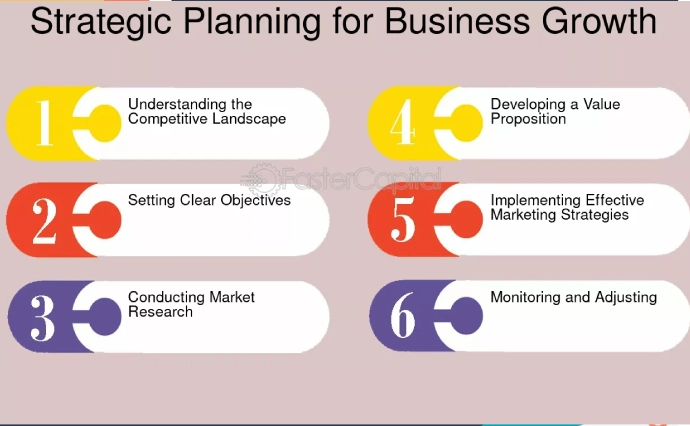Best Strategic Planning Tools: A Comprehensive Guide
Strategic planning is essential for the success and growth of any business or organization. It helps in setting goals, determining actions to achieve those goals, and mobilizing resources to execute the actions. However, without the right tools, this process can become overwhelming. In this guide, we will explore the best strategic planning tools that can make your planning process more efficient, organized, and successful. Let’s dive into the top tools and methods that help businesses develop solid strategies.
What are Strategic Planning Tools?
Strategic planning tools are software or techniques used by organizations to help in the planning and execution of long-term goals. These tools provide a framework for evaluating internal and external environments, setting priorities, and tracking performance. The best strategic planning tools help companies focus on what’s important while making it easier to adapt to changes in the market or business environment.
Why Use the Best Strategic Planning Tools?
Using the best strategic planning tools ensures that you are not just creating a plan but also executing it effectively. These tools allow for better data analysis, communication among team members, and tracking of progress. More importantly, they help organizations stay aligned with their vision and objectives. Without these tools, managing and adjusting plans becomes much more difficult.
Top Best Strategic Planning Tools for Your Business
Here are some of the top best strategic planning tools that can streamline your business planning:
SWOT Analysis
One of the most commonly used best strategic planning tools is the SWOT Analysis. This tool helps in evaluating the Strengths, Weaknesses, Opportunities, and Threats of a business or project. By identifying these factors, businesses can create strategies that capitalize on strengths and opportunities while mitigating weaknesses and threats.
How to use it:
Strengths: Identify what your business does well.
Weaknesses: Acknowledge areas that need improvement.
Opportunities: Explore potential growth avenues.
Threats: Understand external factors that could harm your business.
Balanced Scorecard
The Balanced Scorecard is another popular strategic planning tool that helps businesses measure performance against their strategic goals. It goes beyond financial metrics and considers perspectives like customer satisfaction, internal processes, and learning and growth.
How to use it:
Set objectives for each perspective (financial, customer, internal, learning).
Define metrics to track progress.
Review performance regularly and adjust strategies as needed.
PEST Analysis
The PEST Analysis examines the Political, Economic, Social, and Technological factors affecting an organization. This tool helps businesses understand external factors that could impact their strategies.
How to use it:
Political: Assess government policies and regulations.
Economic: Analyze economic trends and market conditions.
Social: Understand cultural and demographic changes.
Technological: Stay updated on technological advancements that could influence your business.
OKR (Objectives and Key Results)
OKR is a goal, setting framework that helps organizations align their objectives and track key results. It is one of the most effective strategic planning tools for measuring progress toward big, bold goals.
How to use it:
Set clear and ambitious objectives.
Define measurable key results.
Track progress and adjust strategies to ensure success.
VRIO Analysis
The VRIO framework helps businesses assess their resources and capabilities in four key areas: Value, Rarity, Imitability, and Organization. This tool is useful for determining whether your company has a sustainable competitive advantage.
How to use it:
Value: Does your resource provide value?
Rarity: Is it rare in the market?
Imitability: How easy is it for competitors to copy?
Organization: Is your company organized to exploit this resource?
The Benefits of Using the Best Strategic Planning Tools
Using the best strategic planning tools offers several benefits:
Better Decision Making: These tools provide a structured approach to decision-making, ensuring that all factors are considered before implementing strategies.
Improved Efficiency: By automating parts of the strategic planning process, businesses can save time and focus on execution.
Enhanced Collaboration: Many tools allow for real-time collaboration, making it easier for teams to work together on strategic plans.
Clear Goals and Tracking: The tools provide clear objectives and metrics for tracking progress, ensuring that businesses stay on track.

How to Choose the Best Strategic Planning Tools for Your Business
When choosing the best strategic planning tools for your business, consider the following factors:
Ease of Use: The tool should be user-friendly and not require extensive training.
Customization: Every business is unique, so choose a tool that allows for customization to fit your specific needs.
Collaboration Features: If multiple team members are involved in strategic planning, look for tools that support collaboration.
Integration: The tool should integrate with other software you use, such as project management or communication platforms.
Cost: Ensure the tool fits within your budget without sacrificing essential features.
Best Strategic Planning Tools
Strategic planning is vital for any organization. It helps set goals, allocate resources, and make decisions. With the right tools, this process becomes easier and more effective. Below, we will discuss some of the best strategic planning tools available today.
What Are Strategic Planning Tools?
Strategic planning tools are software or methods that help organizations plan for the future. They allow teams to outline their vision, mission, and objectives. These tools also provide frameworks for analyzing data and making decisions. By using these tools, teams can ensure they are aligned with their goals.
Benefits of Using Strategic Planning Tools
Using strategic planning tools has many benefits. First, they help improve communication among team members. When everyone understands the goals, they can work better together. Additionally, these tools provide clarity and structure. Teams can track their progress more easily. This ensures that everyone stays on the same page.
Moreover, strategic planning tools allow for better analysis. Organizations can evaluate their strengths and weaknesses. They can also identify opportunities and threats. This process helps in making informed decisions. As a result, organizations can adapt quickly to changing circumstances.
Popular Strategic Planning Tools
SWOT Analysis
SWOT analysis is one of the most popular tools. It stands for Strengths, Weaknesses, Opportunities, and Threats. This tool helps teams evaluate their internal and external environments. By identifying these factors, teams can develop effective strategies. They can leverage their strengths and opportunities while addressing weaknesses and threats.
Balanced Scorecard
The balanced scorecard is another effective tool. It helps organizations measure their performance from multiple perspectives. These perspectives include financial, customer, internal processes, and learning and growth. By using this tool, organizations can ensure they are not just focused on profits. Instead, they consider their overall impact.
OKRs (Objectives and Key Results)
OKRs are a popular goal-setting framework. They help organizations set clear objectives and measurable results. This method encourages teams to focus on what matters most. By establishing clear goals, organizations can align their efforts and track progress over time.
Collaborative Strategic Planning Tools
In today’s world, collaboration is key. Many strategic planning tools allow teams to work together seamlessly. For instance, tools like Trello and Asana help teams manage tasks and projects. They allow team members to communicate and share updates in real-time. This enhances teamwork and ensures everyone stays informed.
Choosing the Right Tool
When selecting a strategic planning tool, consider your organization’s needs. Different tools have different features. Some tools are better for small teams, while others suit larger organizations. Additionally, consider the user interface. A user-friendly tool can save time and reduce frustration.
Moreover, think about integration with other tools. For instance, if your team uses specific project management software, choose a tool that connects easily. This will streamline your planning process.
Best Strategic Planning Tools
Importance of Choosing the Right Tools
Choosing the right strategic planning tools is crucial for any organization. First, these tools help teams set clear goals. When everyone knows the objectives, they can work together effectively. Additionally, the right tools can improve communication. Teams can easily share ideas and updates. This collaboration leads to better results. Furthermore, selecting user-friendly tools saves time. A tool that is easy to use helps team members focus on their tasks. Therefore, investing time in choosing the right tools is very important.
Integrating Strategic Planning Tools with Other Systems
Integrating strategic planning tools with other systems can enhance productivity. For instance, many tools can connect with project management software. This integration allows teams to track their progress easily. As a result, they can see how their tasks align with their strategic goals. Moreover, integration reduces the chances of errors. When data flows smoothly between systems, teams can rely on accurate information. Therefore, organizations should consider integration options when choosing strategic planning tools.
Training Team Members on Strategic Planning Tools
Training team members on how to use strategic planning tools is very important. First, proper training helps everyone understand the tools. When team members know how to use the tools, they can get the most benefits from them. Also, training builds confidence. Team members feel more comfortable using the tools, which leads to better performance. In addition, organizations should provide ongoing support. This way, team members can ask questions and improve their skills. Overall, investing in training is a smart choice for any organization.
FAQs About Best Strategic Planning Tools
1. What are strategic planning tools?
Strategic planning tools are software or methods that help organizations outline their goals, analyze data, and make informed decisions. They assist teams in developing effective strategies for future success.
2. Why are strategic planning tools important?
These tools are important because they improve communication, provide structure, and enhance analysis. They help teams stay aligned with their goals and track progress, leading to better decision-making.
3. What is a SWOT analysis?
A SWOT analysis is a popular strategic planning tool that evaluates an organization’s Strengths, Weaknesses, Opportunities, and Threats. It helps teams identify internal and external factors affecting their success.
4. How does the balanced scorecard work?
The balanced scorecard is a performance measurement tool. It looks at an organization’s success from multiple perspectives: financial, customer, internal processes, and learning and growth. This approach ensures a holistic view of performance.
5. What are OKRs?
OKRs, or Objectives and Key Results, are a goal-setting framework. They help organizations set clear objectives and measurable outcomes. This method focuses team efforts on what matters most to achieve success.
6. How can I choose the right strategic planning tool for my organization?
To choose the right tool, consider your organization’s needs, team size, and budget. Look for user-friendly options and check for integration capabilities with other systems. This will help ensure that the tool aligns with your planning process.
7. Is training necessary for using strategic planning tools?
Yes, training is essential for effective use of strategic planning tools. Proper training ensures that team members understand the tools, build confidence, and maximize their benefits. Ongoing support can also help team members improve their skills over time.
Conclusion
Strategic planning is crucial for any business looking to succeed in today’s competitive environment. Using the best strategic planning tools can help streamline the process, making it easier to create, execute, and adjust your strategies. Whether you’re a small startup or a large corporation, these tools can provide the framework needed to achieve your business goals effectively. By integrating tools like SWOT Analysis, Balanced Scorecard, and OKR into your strategic planning process, you can ensure that your business stays on track for long-term success.





